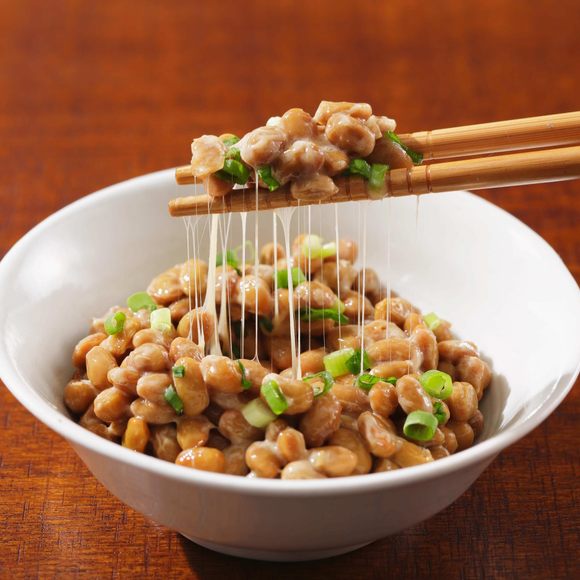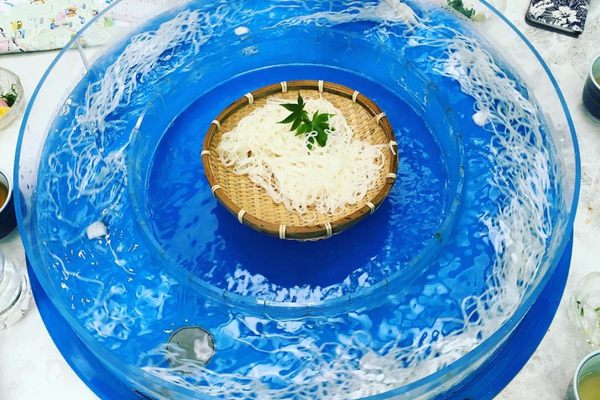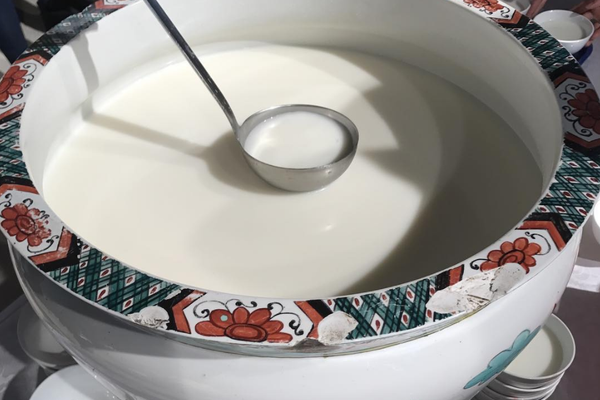Love it or hate it, nattō is a unique example of the art of fermentation. Your first clue is the sticky slime that coats the brown soybeans. Known as neba-neba in Japan, the substance is produced by healthy bacteria as a means of protection and connection across the fermented legumes. It’s a good indicator of how many probiotics are thriving in your bowl: The slimier, the better. The resulting dish is as healthy as it is pungent. Nattō’s odor, which has been likened to ammonia or a strong blue cheese, is so powerful that some restaurants have private areas built for customers to eat the beans without disturbing others.
But once you get past the strong odor and unusual texture, nattō offers an earthy, umami-heavy flavor that fans often compare to aged cheese. To enjoy the sticky beans, you’ll first want to stir them well with chopsticks, to ensure that the slime congeals into a thick, stretchy mass and to work in the usual accompaniments of soy sauce, onions, and karashi mustard. Most Japanese diners consume the mixture as a nutritionally-charged breakfast, along with rice and a raw egg, or stirred into stews and soups.
The benefits of fermented cuisine have long been known in Japan, as seen through better-known foods such as miso and tsukemono (pickled vegetables). In addition to improving digestive health, nattō is also one of the highest natural sources of vitamin K2, which is beneficial to bone health. The enzyme nattokinase, found only within the fermented bean dish, helps improve blood flow.
If the legends are true, nattō was first prepared in the saddle bags of a samurai’s horse. While on campaign in Northeast Japan, Minamoto No Yoshiie had supposedly stopped to cook some soybeans when he was attacked by enemies. Forced to retreat quickly, Yoshiie didn’t have time to properly store the beans. After spending days packed in straw, they quickly spoiled, becoming slimy and stinky with bacteria. We might have nattō today because some of Yoshiie’s soldiers were brave enough to eat the resulting mass and found the taste to their liking.
Written By
 JamesRUDD
JamesRUDD
Sources
- www.sbs.com.au/food/article/2017/03/30/why-japans-ancient-natto-could-be-key-healthy-life
- www.soyinfocenter.com/books/151/
- www.soyinfocenter.com/HSS/natto1.php
- www.meguminatto.com/history.html
- well.blogs.nytimes.com/2016/08/02/are-you-ready-to-eat-your-natto/
- www.nyrture.com/blog/2015/10/3/gaga-for-goo-how-probiotic-is-natto
- www.seriouseats.com/2017/07/obsessed-ann-yonetani-natto-nyrture.html














